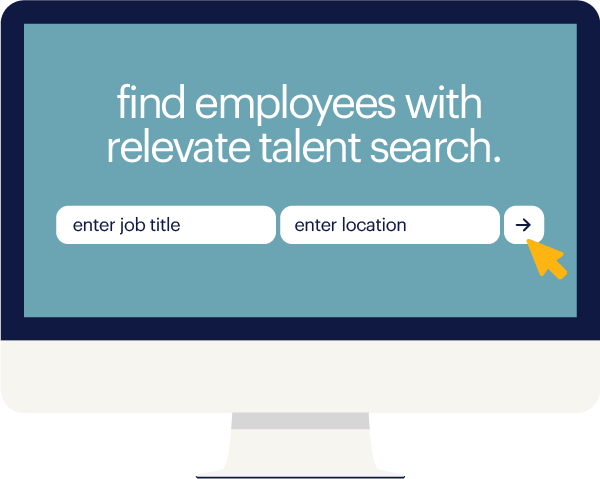Workers on the forefront of programming language skills, like JavaScript and .NET developers, are in demand across many industries — and it's easy to understand why so many employers are on the hunt. Though Java is becoming the standard language for most tech companies, not all developers know how to code in it, and .NET developers are invaluable for getting reliable applications up and running more easily and quickly — which saves your company time and money.
Data from labor-insights provider Burning Glass shows that there were more than 8,100 JavaScript developer postings and and a whopping 43,157 postings for .NET developers in the past 12 months, each taking an average of 41 and 31 days to fill, respectively. No matter what industry you're in, that's a lot of days to wait to secure your creative programming edge.
Let's look at how to hire top-notch JavaScript or .NET developers as quickly as possible. To start you off, here's a handy checklist of the steps you'll need to cover:
1. improve the efficiency of your hiring processReady for even more hiring guidance? Keep reading for insight into each of these checklist steps.
1. speed up your hiring process
Everyone feels the strain of lengthy hiring timelines: existing employees have to take on extra work, deliverables risk delay and the capacity to take on new projects (which would lead to new revenue) becomes limited. Of course, finding the right person takes time, but you can guarantee it doesn't take more time than necessary by auditing your hiring process for efficiency. Use the below diagram to begin doing just that.
2. develop a competitive compensation package
Great perks and benefits really matter when it comes to attracting technologies talent — however, a competitive salary is what gets the attention of top talent attention. JavaScript and .NET developers don't come cheap, but that's because the work that they do is so valuable.
When defining what your compensation level should be for these roles, keep in mind the candidate's salary trajectory as well. Developers can consistently increase their earning potential by learning more programming languages (like ASP.NET MVC), getting Microsoft Certified Solutions Developer (MCSD) certified or going through the Microsoft Most Valuable Professional (MVP) program. And the more credentials they get under their belt, the more you're going to need to offer in order to stay competitive.
To get a ballpark idea of what a competitive salary is for JavaScript and .NET developers, and any other key positions you need, refer to Randstad's salary guide. Salaries can vary greatly by location, too, so don't forget to consider your specific market in addition to experience when you determine the salary. Our salary calculator provides the up-to-date, region-specific pay rate data you need to make an informed decision.
3. identify the top skills for javascript and .net developers
Before writing your job description, be sure you know which skills, certifications and experience you'll need your JavaScript or .NET developer to have. ("Need" is the operative word here.) Then, flesh out that list with those items that would be ideal, but not required.
Why make that distinction? Because while you absolutely should aim for an ideal candidate, you risk prematurely excluding talented applicants if you've made your requirements so extensive that most candidates can't meet them all. Hence the importance of distinguishing between "must-haves" — like expert troubleshooting skills — and "nice-to-haves" — such as experience with GitHub for JavaScript developers or CSS proficiency for .NET developers.
Below are the skills most requested by employers nationwide in the past year for these two roles.
javascript developers
JavaScript
AngularJS
Node.js
software development
HTML5
Java
.net developers
.NET
SQL
Microsoft C#
ASP.NET
JavaScript
SQL Server
don't scare off talented applicants by drowning your posting in a sea of required skills, certifications and experience.
4. write an eye-catching job description
Your job description gives prospects their first impression of your company. To make it a good one, you'll need to write an engaging description that invites them to imagine working for you — one that really catches their eye. Here are a few tips for accomplishing just that.
don't write like a robot
Stiff, distant language and a dry listing of cold, hard facts will make it seem like your job description was written by a bot, which will keep potential candidates at arm's length. How can you give your description a human touch?
keep the phrasing personable.
For example: "The right candidate will exhibit the below qualities" can be rewritten as "Here are some of the qualities we're looking for in our next teammate."
answers the questions serious applicants will have.
JavaScript and .NET developer prospects will be interested in a variety of things. Here are some of the questions you should keep top of mind as you write:
- How much freedom will they have in deciding on the structural integrity of the code?
- Will the company sponsor MCSD, MVP or other training and certification programs?
- What are the baseline perks and benefits, such as options for flexible work hours and working remotely?
show how this job is meaningful
Meaningful work is a powerful tool of attraction for employers. Increasingly, talent is working for a purpose and not just a paycheck — and research shows they'll leave employers if they don't feel their job is meaningful.
To showcase the purpose of your company, anchor the specific duties and responsibilities of the position in the overarching "why." Perhaps you're building education tools and platforms? In that case, your developers aren't simply working to build interactive, scalable quiz applications, they're working to close the education gap.
Be sure to demonstrate that you understand the value these developers bring to the table. These are the creative people who develop the interactive, dynamic sites and applications that we all use. Basically, they're the ones who code hopes and plans into reality — so make sure prospects can see that you know their worth.
make it easy to skim
A skimmable job description doesn't skimp on details or personality. Rather, it packages them in a way that allows readers to absorb information effortlessly. (Not to mention, an easy-to-skim description is much more mobile-friendly).
How to keep your description skimmable? Use:
- to-the-point, personable sentences — don't be a robot, but don't ramble either
- short paragraphs instead of long blocks of sentences
- bullet points for listable items
- a clear, uniform structure
These tips should get you off to a good start, but if you'd like more insights and advice, look to our guide to writing highly effective job descriptions.
developers are the stars who code hopes and plans into reality — so show candidates that you know the value they bring.
5. brush up on the latest industry trends
The technologies industry certainly knows the joy — and pain — that rapid change can cause. After all, with a steady stream of innovative products and services, as well as big advancements in cloud-based computing and AI, there's a whole lot more opportunity out there for today's job seekers. But for employers, that means a whole lot more hiring, which means a lot of time, effort and budget to source, hire, train and retain larger and larger teams. Not everyone is poised to tackle such a challenge.
To make your hiring strategy as strong as can be, you need to know the lay of the land. These hiring trends in the technologies industry will provide you with a baseline understanding of what's coming down the pike, and insights into how this will impact getting JavaScript and .NET developers onto your team.
- Demand will continue to increase for both JavaScript and .NET developers, with a respective projected growth of 15 percent and 30 percent over the next 10 years.
- Low unemployment in the sector means that demand has already outpaced talent supply. Given the projected demand growth, employers should consider their talent needs for JavaScript and .NET developers especially urgent.
- Perks and benefits — such as onsite amenities, flexible work arrangements and health and well-being offerings — heavily influence choice of employer for tech talent, so companies need to shore up their offerings to attract top talent.
demand for javascript and .net developers will grow 15% and 30%, respectively, over 10 years.
6. choose your channels to find candidates
When it comes to developer talent, a bad hire can mean a subpar product — and we all know what a subpar product means. But when it comes to finding the right channels for sourcing top talent, there isn't a one-size-fits-all solution. Depending on your company's size, volume of staffing needs and budget allocation for recruitment, some options will provide more ROI (and better candidates) than others.
So if you've already exhausted the job boards, consider amplifying your efforts by partnering with a professional staffing firm. Staffing firms provide customers with a talent pool of prescreened and vetted candidates, as well as industry experts to help guide your hiring strategy and decisions. At the end of the day, what professional staffers really provide is confidence — the confidence that you're making the best decision possible, and as efficiently as possible.
Reach out to the experts at Randstad Technologies to discuss finding your next great JavaScript or .NET developer. Want to browse our candidates on your own first? Head on over to our Find Employees portal to explore our pool of qualified talent today.








